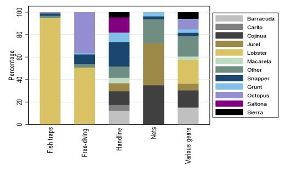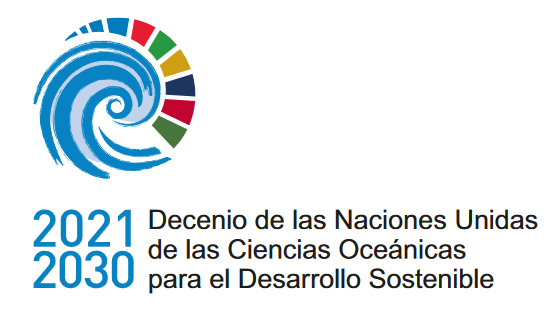Caracterización de los medios de vida de una comunidad de pescadores a pequeña escala en el Caribe colombiano (Medios de vida de PPE del Caribe colombiano)
DOI:
https://doi.org/10.47193/mafis.3522022010504Palabras clave:
Enfoque de medios de vida sostenibles (SLA), pesquerías de pequeña escala, activos, pobreza, brecha educativa, seguridad alimentaria, ColombiaResumen
Las comunidades costeras que dependen de la pesca en pequeña escala (PPE) son poco conocidas. El diseño de políticas para abordar sus vulnerabilidades requiere comprender el contexto socioeconómico en el que operan los PPE. Desafortunadamente, esa información suele ser incompleta en los países en desarrollo. Este estudio busca cerrar esta brecha examinando la sociodemografía, los activos, las estrategias de sus medios de vida, la seguridad alimentaria y los niveles de pobreza de los hogares pescadores y no pescadores en una comunidad de pescadores en el Caribe colombiano. El análisis sigue el enfoque de los medios de vida sostenibles. Nuestros resultados muestran que: (i) los PPE juegan un doble papel en los hogares pesqueros: autoconsumo y generación de ingresos. (ii) Los PPE juegan un papel esencial en la seguridad alimentaria tanto para los hogares pescadores como para los que no lo son. (iii). La diversificación de los medios de vida, incluida la pesca multiespecífica y las actividades de los miem bros del hogar, además del cabeza de familia, es clave para diversificar el riesgo y suavizar el consumo. (iv) Las comunidades pesqueras enfrentan importantes restricciones en el acceso a los mercados financieros. (v) Aunque los hogares pescadores obtienen más ingresos que los que no lo son, exhiben una educación y alfabetización más bajas. Estos resultados muestran que la PPE es un amortiguador contra la vulnerabilidad de las comunidades pesqueras. Es posible que se necesiten estrategias de conservación estrictas para sostener la pesca artesanal, pero ellas deben ir acompañadas de fuentes alternativas de ingresos, como esquemas de compensación, protección social o políticas que permitan medios de vida alternativos. JEL Codes: D13, I21, J22, J46, Q22, Q56
Descargas
Referencias
Agudelo E, Ajiaco RE, Álvarez L, Agudelo E, Ajiaco RE, Álvarez LE, Barreto CG, Borda CA, Bustamante CC, Caldas JP, et al. 2011. Protocolo De Captura De Información Pesquera, Biológica y Socioeconómica en Colombia. Ministerio de Agricultura y Desarrollo Rural, Dirección de Pesca y Acuicultura, Subgerencia de Pesca y Acuicultura INCODER. Conservación Internacional. 80 p.
Allison EH. 2005. The fisheries sector, livelihoods and poverty reduction in Eastern and Southern Africa. In: Ellis F, Freeman HA, editors. Rural Livelihoods and Poverty Reduction Policies. Routledge, London.
Allison EH, Ellis F. 2001. The livelihoods approach and management of small-scale fisheries. Marine Policy. 25: 377-388.
Asiedu B. 2011. Understanding the socioeconomic characteristics and perception of poverty in artisanal fisheries of Ghana. The Case of Kpong Reservoir, Munich, GRIN Verlag, [https://www.grin.com/document/165448].
Bailey C, Jentoft S. 1990. Hard choices in fisheries development. Marine Policy. July. p 333-344. DOI: https://doi.org/10.1016/0308-597X(90)90055-V.
Barr R, Bruner A, Edwards S. 2019. Fisheries Improvement Projects and small-scale fisheries: The need for a modified approach. Marine Policy. 105: 109–115.
Barro R, Lee J. 2013. A New Data Set of Educational Attainment in the World, 1950-2010. Journal of Development Economics. p. 184-198.
Beck T, Nesmith C. 2001. Building on Poor People's Capacities: The Case of Common Property Resources in India and West Africa. World Development. 29 (1): 119-133.
Béné C, Friend RM. 2011. Poverty in small-scale fisheries: old issue new analysis. Progress in development Studies. 11 (2): 119-144.
Béné C. 2003. When fishery rhymes with poverty: a first step beyond the old paradigm on poverty in small-scale fisheries. World Development. 31 (6): 941–75.
Béné C. 2004. Contribution of small-scale fisheries to rural livelihoods in a water multi-use context with a particular emphasis on the role of fishery as a “last resort activity” for the poor. Background paper prepared for the Second Session of the Working Party on Small-Scale Fisheries, Bangkok, Thailand, 18-21 November 2003. Rome, FAO. 31 p.
Béné C. 2009. Are Fishers Poor or Vulnerable? Assessing Economic Vulnerability in Small-Scale Fishing Communities. The Journal of Development Studies. 45 (6): 911-933, DOI: https://doi.org/10.1080/00220380902807395.
Béné C, Arthur R, Norbury H, Allison EH, Beveridge M, Bush S, Campling L, Leschen W, Little D, Squires D. et al. 2016. Contribution of Fisheries and Aquaculture to Food Security and Poverty Reduction: Assessing the Current Evidence. World Development. 79: 177–196. DOI: https://doi.org/10.1016/j.worlddev.2015.11.007.
Béné C, McFadyen G, Allison EH. 2007. Increasing the contribution of small-scale fisheries to poverty alleviation and food security. FAO Fisheries Technical Paper 481. Rome.
Bjordal Å. 2005. Uso de medidas técnicas en la pesca responsable: regulación de artes de pesca. En: Guía del administrador pesquero. Medidas de ordenación y su aplicación. FAO Fisheries Technical Paper.
Chambers R, Conway GR. 1992. Sustainable rural livelihoods: practical concepts for the 21st century. IDS Discussion Paper 296 (September).
Chamnan C, Thilsted S, Roitana B, Sopha L, Gerpacio RV, Roos N. 2009. The role of fisheries resources in rural Cambodia: combating micronutrient deficiencies in women and children. Department of fisheries post-harvest technologies and quality control. Fisheries Administration, Ministry of Agriculture, Forestry and Fisheries. Phnom Penh.
Chasqui-Velasco L, Polanco FA, Acero P, Mejía-Falla PA, Navia A, Zapata LA, Caldas J. (Eds.) 2007. Libro-Rojo-Peces-Marinos-De-Colombia 2017.
Cinner JE. 2014. Coral reef livelihoods. Current Opinion in Environmental Sustainability. 7: 65–71.
Cinner JE, McClanahan TR, Wamukota A. 2010. Differences in livelihoods, socioeconomic characteristics, and knowledge about the sea between fishers and non-fishers living near and far from marine parks on the Kenyan coast. Marine Policy. 34 (1): 22–28. DOI: https://doi.org/10.1016/j.marpol.2009.04.003.
Cinner JE, Daw T, McClanahan TR. 2009. Socioeconomic factors that affect artisanal fishers' readiness to exit a declining fishery. Conservation Biol. 23 (1): 124-30.
Cinner JE, McClanahan TR, Graham NAJ, Daw TM, Maina J, Stead SM, Wamukota A, Brown K, Bodin O. 2012. Vulnerability of coastal communities to key impacts of climate change on coral reef fisheries. Global Environmental Change. 22 (1): 12-20.
Dane. 2018. Departamento Administrativo Nacional de Estadísticas. Boletín Técnico Pobreza Monetaria en Colombia. Available at: https://img.lalr.co/cms/2018/03/22191631/bol_pobreza_17.pdf.
DFID. 1999. Sustainable Livelihoods Guidance Sheets Introduction: Overview. Sustainable Livelihoods Guidance Sheets 10.
Ellis F, Allison E. 2004. Livelihood diversification and natural resource access. LSP Working Paper 9. Food and Agriculture Organization of the United Nations. Livelihood Support Programme (LSP).
Etea BG, Zhou D, Abebe KA, Sedebo DA. 2019. Household income diversification and food security: Evidence from rural and semi-urban areas in Ethiopia. Sustainability (Switzerland). DOI: https://doi.org/10.3390/SU11123232.
FAO & World Fish Center. 2008. Small-scale capture fisheries: A global overview with emphasis on developing countries a preliminary report of the Big Numbers Project. The WorldFish Center. Penang, Malaysia. In The World Bank. Global Program on Fisheries (PROFISH). 63 p.
FAO. 2021. Small-scale fisheries and the human right to adequate food – Making the connection: exploring synergies in the implementation of the SSF Guidelines and the Right to Food Guidelines. Rome. DOI: https://doi.org/10.4060/cb4939en.
FAO. 2012. Escala Latinoamericana y Caribeña de Seguridad Alimentaria (ISBN 978-9).
Friedman K, Krone M, Pinca S, Magron F, Boblin P, Pakoa K, Awiva R, Chapman L. 2008. Papua New Guinea country report: profiles and results from survey work at Andra, Tsoilaung, Sideia and Panapompom. Pacific Regional Oceanic and Coastal Fisheries Development Programme, New Caledonia.
Garaway C. 2005. Fish, fishing and the rural poor. A case study of the household importance of small-scale fisheries in the Lao PDR. Aquatic Resources Culture and Development. 1 (2): 131–144.
García CB. 2010. Conocimiento tradicional: Lo que los pescadores artesanales del Caribe colombiano tienen para decirnos. Pan-American Journal of Aquatic Sciences. 5 (1): 78-90.
Gomna A, Rana K. 2007. Inter-household and intra-household patterns of fish and meat consumption in fishing communities in two states in Nigeria. Br J Nutr. 97 (1): 145–152.
Herring A, Racelis R. 1992. Monitoring the Coverage of Public Programs on Low-income Families: Philippines 1992, Integrated Development Planning Project, National Economic Development Authority, Manila.
Kawarazuka N. 2010. The contribution of fish intake, aquaculture, and small-scale fisheries to improving nutrition: A literature review. The WorldFish Center Working Paper No. 2106. The WorldFish Center, Penang, Malaysia. 44 p.
Kawarazuka N, Béné C. 2010. Linking small-scale fisheries and aquaculture to household nutritional security: an overview. Food Security. 2: 343–357. DOI: https://doi.org/10.1007/s12571-010-0079-y.
Lizarazo JP, López D. 2007. Identificación de amenazas y vulnerabilidades para la elaboración del plan de emergencias del PNN Corales del Rosario y San Bernardo. Universidad Piloto de Colombia.
MADS. 2012. Ministerio de Ambiente y Desarrollo Sostenible. Modelo de desarrollo sostenible para el área marina protegida de los archipiélagos de Nuestra Señora del Rosario y de San Bernardo 2013-2040. Colombia.
Maldonado JH, Moreno-Sánchez RP. 2014. Estimating the adaptive capacity of local communities at marine protected areas in Latin America: a practical approach. Ecology and Society. 19 (1): 16. DOI: https://doi.org/10.5751/ES-05962-190116.
Márquez A. 2014. Povos dos recifes: reconfiguracoes na apropiacao social de ecosistemas marinos e litoraneos em duas comunidades do Caribe. Tesis Doctoral. Universidade Federal do Rio de Janeiro. Rio de Janeiro, Brasil.
McClanahan TR, Cinner JE, Graham NAJ, Daw TM, Maina J, Stead SM, Wamukota A, Brown K, Venus V, Polunin NVC. 2009. Identifying Reefs of Hope and Hopeful Actions: Contextualizing Environmental, Ecological, and Social Parameters to Respond Effectively to Climate Change. Conservation Biology. 23 (3): 662–671.
McClanahan TR, Cinner JE, Maina J, Graham NAJ, Daw TM, Stead SM, Wamukota A, Brown K, Ateweberhan M, Venus V, Polunin NVC. 2008. Conservation action in a changing climate. Conservation Letters. 1: 53–59.
Mendoza S, Moreno-Sánchez R. 2014. Construcción participativa de un modelo de resiliencia socio ecológica en el territorio de Barú, Bolívar, Colombia. Informe presentado a Colciencias en el marco del proyecto “Apropiación social del conocimiento ecológico con comunidades marino-costeras en áreas marinas protegidas”. Grupo de Estudios Ambientales y de los Recursos Naturales-GEMAR, Universidad de los Andes.
Mkenda AF. 2000. The Relative Welfare of Artisan Fishermen in Zanzibar. Paper given at the Second international Conference on Environment and development, the Royal Swedish Academy of Sciences, Stockholm, 6–8 September 2000. Available from: [http://www.yourk.ac.uk/depts/eeem/publish/edepdf/Confer-2000-117-v2.pdf].
Moreno-Sánchez RP, Maldonado JH. 2013. Adaptive capacity of fishing communities at marine protected areas: A case study from the Colombian pacific. Ambio A Journal of the Human Environment. 42 (8): 985-996. DOI: https://doi.org/10.1007/s13280-013-0454-y.
Mujinga W, Lwamba J, Mutala S, Husken SMC. 2009. An inventory of fish species at the urban markets in Lubumbashi, Democratic Republic of Congo. Regional Programme Fisheries and HIV/ AIDS in Africa: Investing in Sustainable solutions. The World- Fish Center. Project Report 1983. 30 p.
Nayak PK, Oliveira LE, Berkes F. 2014. Resource degradation, marginalization, and poverty in small-scale fisheries: threats to social-ecological resilience in India and Brazil. Ecology and Society. 19 (2): 73. DOI: https://doi.org/10.5751/ES-06656-190273.
OECD. 2016. Pesca y acuicultura en Colombia. Journal of Sea. 1 (Pesca artesanal y acuicultura). 34. [https://www.oecd.org/tad/fisheries/Fisheries_Colombia_SPA_rev.pdf].
Pineda I, Martínez LA, Bedoya D, Caparroso P, Rojas JA. 2006. Plan de manejo del Parque Nacional Natural Corales del Rosario y San Bernardo. UAESPNN, Territorial Costa Caribe.
Pita C, Villasante S, Pascual J. 2019. Managing small scale Fisheries under data poor scenarios: lessons from around the world. Marine Policy. 101: 154-157.
PNN. 2019. Parques Nacionales Naturales de Colombia. Plan de manejo Parque Nacional Natural los Corales del Rosario y de San Bernardo (2016-2021). 260 p.
PNN. 2020. Parques Nacionales Naturales de Colombia. Plan de Manejo del Parque Nacional Natural Los Corales del Rosario y de San Bernardo (2020- 2025). 228 p.
Rodríguez-Sánchez CA, Moreno-Sánchez RP, Maldonado JH. 2016. Incidencia de dos medidas diferentes de pobreza en la estimación de la capacidad adaptativa de comunidades locales ubicadas en áreas marinas protegidas: el caso de la comunidad de Barú, Bolívar. Boletín de Investigaciones Marinas y Costeras. 45 (2): 197-236. DOI:10.25268/bimc.invemar.2016.45.2.683.
Rueda M, Doncel O, Viloria E, Mármol C, García C, Girón A, García L, Rico F, Rodríguez A, Borda BC. 2011. Atlas de la pesca marino–costera de Colombia: 2010 – 2011. Tomo pacífico. INVEMAR y ANH. Serie de publicaciones del INVEMAR. Santa Marta.
Teh L, Sumaila UR. 2007. Malthusian overfishing in Pulau Banggi? Marine Policy. 31 (4): 451–457.
Thorpe A, Neil A, Allison E. 2007. Fisheries and poverty reduction. CAB Reviews: Perspectives in Agriculture, Veterinary Science, Nutrition and Natural Resources. 2 (85): 1-12.
Tietze U, Groenewold G, Marcoux A. 2000. Demographic change in coastal fishing communities and its implications for the coastal environments. FAO Fisheries Technical Paper 403. FAO, Rome.
Villamil E, Bolaño J, Gómez W, Valencia N, Geles M, Moreno-Sánchez R, Mendoza S, Maldonado JH. 2015. El pescador de Barú: una aproximación a la recuperación del conocimiento asociado a la pesca. Universidad de los Andes, Facultad de Economía, CEDE, Ediciones Uniandes.
Viloria HMM, Ante RF, Pérez PS, Correa MC, Jiménez LEA, Llano CG, Martínez W, Castro A, Posada S, Gómez C, et al. 2014. Caracterización del uso y aprovechamiento de recursos hidrobiológicos en áreas protegidas de parques nacionales naturales en el caribe de Colombia. Boletin de Investigaciones Marinas y Costeras. 43 (2): 277–306.
Willmann R. 2004. Poverty in coastal fisheries. In: Neiland, A.E. & Béné, C, editors. Poverty and Small-scale Fisheries in West Africa. Kluwer Academic Publishers. Dordrecht. p. 245–51.
World Bank. 2020. The World Bank Data. Available on: [https://data.worldbank.org/indicator/SP.POP.DPND].

Descargas
Publicado
Número
Sección
Licencia
Derechos de autor 2022 Jorge Higinio Maldonado, Rocío del Pilar Moreno-Sánchez, Myriam Elizabeth Vargas-Morales, Emilio Leguízamo

Esta obra está bajo una licencia internacional Creative Commons Atribución-NoComercial-CompartirIgual 4.0.
Los autores de los artículos publicados en Marine and Fishery Sciences conservan los derechos de autor de sus artículos, a excepción de las imágenes de terceros y otros materiales añadidos por Marine and Fishery Sciences, que están sujetos a los derechos de autor de sus respectivos propietarios. Por lo tanto, los autores son libres de difundir y volver a publicar sus artículos, sujeto a los requisitos de los propietarios de derechos de autor de terceros y sujeto a que la publicación original sea completamente citada. Los visitantes también pueden descargar y reenviar artículos sujetos a los requisitos de citas. La capacidad de copiar, descargar, reenviar o distribuir cualquier material siempre está sujeta a los avisos de derechos de autor que se muestran. Los avisos de copyright deben mostrarse de manera prominente y no pueden borrarse, eliminarse u ocultarse, total o parcialmente. El autoalmacenamiento en servidores y repositorios de preimpresión está permitido para todas las versiones.
Esta revista ofrece a los autores una política de acceso abierto. Los usuarios pueden leer, descargar, copiar, distribuir, imprimir, buscar o vincular los textos completos de los artículos, o usarlos para cualquier otro propósito legal dentro de la licencia Creative Commons 4.0 (BY-NC-SA), sin solicitar permiso previo del editor o del autor. Esto está de acuerdo con la definición BOAI de acceso abierto.
 https://orcid.org/0000-0001-5501-6374
https://orcid.org/0000-0001-5501-6374 https://orcid.org/0000-0002-2817-7399
https://orcid.org/0000-0002-2817-7399 https://orcid.org/ 0000-0002-3380-3542
https://orcid.org/ 0000-0002-3380-3542 https://orcid.org/0000-0002-1272-3543
https://orcid.org/0000-0002-1272-3543





















